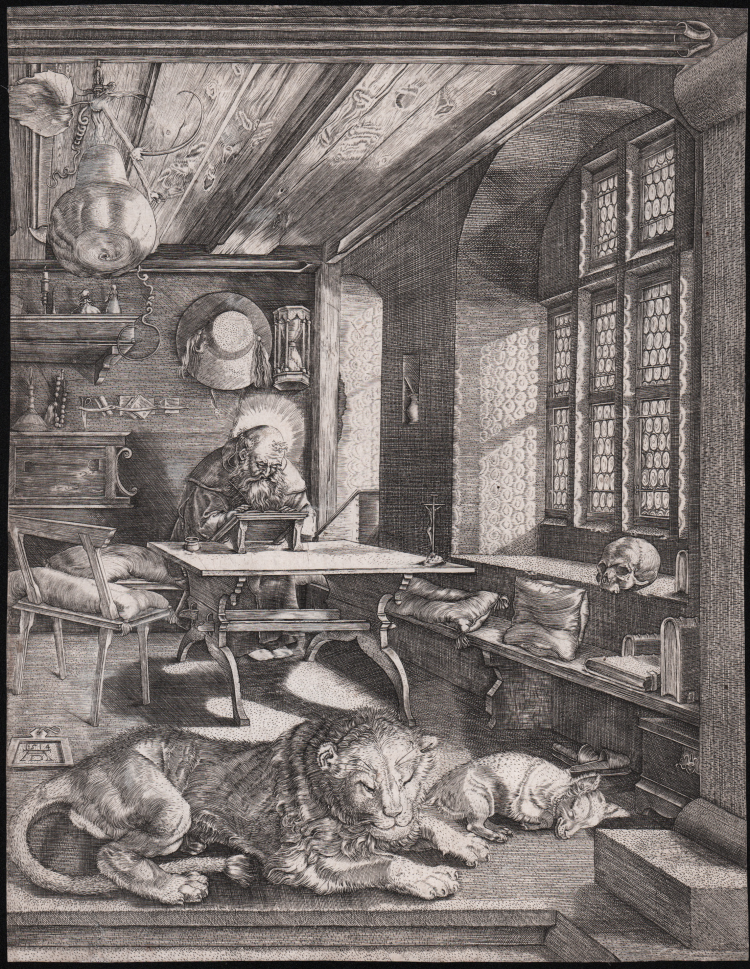




| Reference: | S47333 |
| Author | Anonimo |
| Year: | 1550 ca. |
| Measures: | 185 x 240 mm |



| Reference: | S47333 |
| Author | Anonimo |
| Year: | 1550 ca. |
| Measures: | 185 x 240 mm |
St. Jerome in his study; St. Jerome seated writing at a sunlit writing desk, with a lion and a dog in the foreground.
Engraving, ca. 1550, a mirror copy of Albrecht Durer's famous engraving dated 1514.
Magnificent proof, rich in tone, printed on contemporary laid paper, minimal corner restorations visible on verso, otherwise in excellent condition.
Dürer often devoted himself to the theme of St. Jerome, either out of predilection or because of the saint's popularity.
By size, date, and quality, this engraving has been grouped with "Knight Death and Devil" (B. 098) and "Melencolia I" (B. 074). Several hypotheses have been advanced about an even closer relationship between these three prints considered as an incomplete series of the four temperaments and representing the three virtues, "intellectuales, morales, et theologicales". The 'Saint Jerome' and the 'Knight Death and Devil' symbolize the contemplative life and the active life, and although they represent two opposite methods of achieving a common objective, the 'Saint Jerome' and the 'Melencolia' express two antithetical ideals. However, during his trip to the Netherlands, Dürer never donated all three of these engravings as a whole, but occasionally the 'Saint Jerome' and the 'Melencolia' as a pair. One historical event has been cited as evidence of a special relationship of these last two prints: in 374 CE. St. Jerome had a vision that made him abandon litterae seculares for litterae divinae.
The perspective construction of the room of 'St. Jerome' has been repeatedly analyzed and sometimes criticized for being distorted. The crucifix on the plate is in a direct visual line between the saint and the skull, the latter a symbol of transience. The gourd, suspended from the ceiling, refers to a dispute between saints Jerome and Augustine over the correct translation of the Hebrew word “kikayon” (Jonah 4:6). Jerome argued that the word meant ivy (hedera), not gourd (curcurbita). The half-window in the back corner was considered a reference to St. Paul's teaching that man sees only a reflection of God, whose true glory remains hidden in a cloud of unconsciousness.
Bibliografia
The Illustrated Bartsch p. 140, 060, C7; J. Heller, Das Leben un die Werke Albrecht Durer, n. 762.
Anonimo
Anonimo